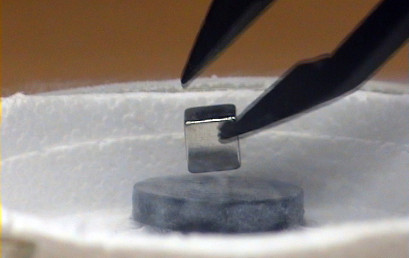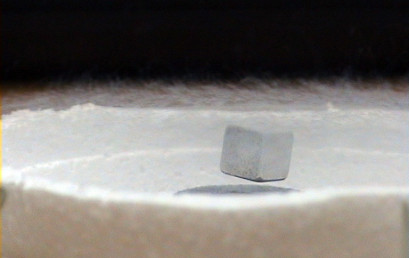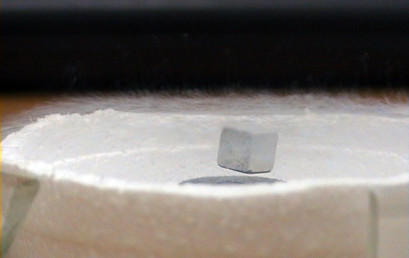The Meissner effect is the expulsion of a magnetic field from a superconductor during its transition to the superconducting state. The German physicists Walther Meissner and Robert Ochsenfeld discovered this phenomenon in 1933 by measuring the magnetic field distribution outside superconducting tin and lead samples.
In this demonstration, we have placed a yttrium-barium-copper-oxygen (123) superconductor inside liquid nitrogen (-196°C). As it is cooled below the superconducting transition temperature, the material becomes a superconductor and a perfect diamagnet, expelling the applied magnetic field. Because of this, when a magnet is held above the material it starts to levitate and hangs suspended in air. Gradually when the liquid nitrogen boils off and the superconductor returns to temperatures above its critical point, the magnet eventually loses its levitation and falls.



